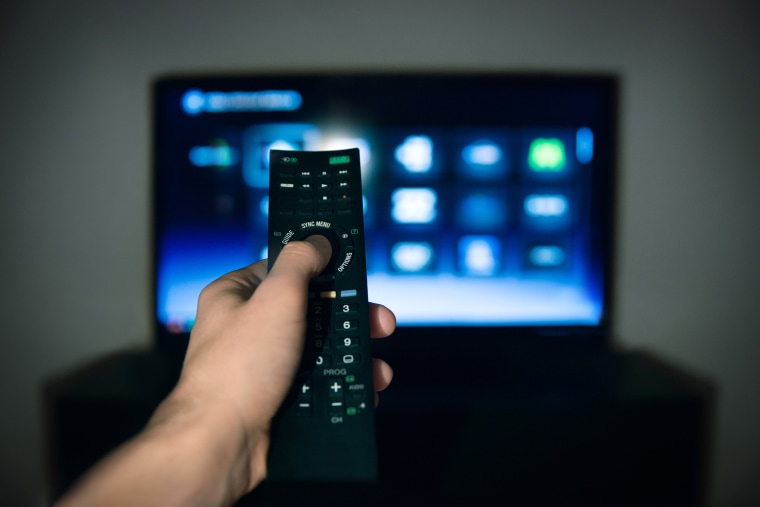As consumers start to notice the growing cost of multiple streaming services, cable and telecom operators are moving in to offer a surprising alternative: free programming.
With 76 million households expected to cut the cable cord by 2023, customers who want to nix traditional cable in favor of cheaper, internet-only streaming deals are being bombarded with a mushrooming range of free content from the very companies they are trying to ditch.
In August, cable operator Altice struck a deal to offer thousands of hours of free programming from CuriosityStream, a streaming service that focuses on documentaries and educational content for customers who opt to buy their broadband service. Altice, which owns the Optimum and Suddenlink brands, will pay a license fee to share CuriosityStream’s history, science and technology shows with its 4.9 million customers. The service would otherwise cost consumers $19.99 for a one-year subscription.
Comcast, the parent company of NBCUniversal, which owns NBC News, will on Thursday roll out details of its Peacock streaming service, widely expected to be free for some of its 28 million-plus broadband subscribers when it launches in April. Peacock will carry some 15,000 hours of shows, including news, sports and general entertainment, with ad-supported and subscription-only tiers.
There are also discussions underway that could result in the service providing free content to those who live outside its footprint, according to one source working on the project. Ahead of Peacock’s debut, customers of Comcast’s Flex receive a plethora of ad-supported TV from the likes of Tubi, Xumo, Pluto, and Sky News, services that don't require a subscription fee.
In more trying economic times, customers may start to ditch pay TV completely and opt for free, ad-supported streaming options instead.
Comcast has also developed technology aimed at delivering subscribers “free to me” programming that points them towards free ad-supported online shows as well as shows they have already paid for via subscription video services such as Netflix. And Comcast is in talks to buy the free ad-supported programming service Xumo, according to The Wall Street Journal, another sign that the cable operator is looking to beef up a free platform.
Free, ad-supported shows may become more popular if the economy takes a downturn, industry watchers point out.
“With price sensitivity being the number-one customer decision factor, even in these robust times, in more trying economic times, customers may choose to not pay, and opt in to free ad-supported options,” said Peter Liguori, former chairman of entertainment at Fox Broadcasting Company, who is now running a TV production company.
Ultimately, free TV and movies help lure new customers to high-speed internet.
“In a competitive market, wireless and wireline companies need to come up with marketing promotions that induce consumers to swap to their service. Free/discounted programming is one such inducement,” said Jeffrey Wlodarczak, an entertainment analyst at Pivotal Research Group.
The race to give subscribers free programming even goes beyond the cable companies. T-Mobile has a “Netflix on Us” promotion, Verizon Unlimited customers can receive Disney+ for free, AT&T will give away HBO Max to certain unlimited wireless customers when that streaming service launches in May, and Apple TV+ is free for the first year with a new device purchase. Amazon provides free shows via Amazon Prime Video.
For Verizon, the addition of Disney+ “beat our expectations, even though we had high expectations," said Verizon CEO Hans Vestberg at a UBS investor event earlier this year. The offer pushed more customers to pay for unlimited plans. “It’s a business relationship where they [Disney] are gaining a lot,” said Vestberg.
But just as music labels felt that the wide popularity of Spotify’s free ad-supported platform devalued music, some are wondering if the communications industry is at risk of doing much the same thing, as its grasp on consumer loyalties weakens.
“Taken together, that’s something like half of all American families," said equities analyst Craig Moffett at the independent research company MoffettNathanson, in a note to investors last year. "Will a generation of Americans be trained to expect that (non-sports) entertainment should cost… nothing?"
Broadband-only homes are growing exponentially. Ahead of the launch of Disney+ on Nov. 12, households with high-speed internet surged by 7.1 percent in the third quarter, according to S&P Global Market Intelligence. EMarketer forecasts that cord-cutting will grow to 76 million households in 2023 from 46 million in 2019. The company also suggests that pay-TV household numbers will fallfrom 86.5 million last year to 72.7 million households in 2023.
Meanwhile, the pay-TV business in the third quarter alone lost 1.8 million subscribers, a 6 percent decline versus the same period a year ago, according to MoffettNathanson.
“We’re approaching distributors and saying why don’t you take us and make us part of the basic,” said John Hendricks, founder and chairman of CuriosityStream, and former founder of Discovery Channel. He sees an old business model coming back to life, with cable operators packaging programming apps in a bundle for broadband customers. “Transitioning from channels to menus: It’s as unstoppable as the cellular revolution.” The company has signed up 10 million subscribers, mainly due to its global agreements with internet providers, Hendricks estimated.
Liguori points out that free TV is being used as a loss leader in some cases, and as a brand builder in others.
“As the key combatants plan for the future, each one of those services will look for ways to monetize," he said. "There is little doubt that the simplest way to monetize is to offer both ad-supported and non-ad supported services.”
However, analyst Wlodarczak warns that such free promotions can end up hurting programmers if it results in a huge number of disconnections at a later date.
“Consumers are paying big dollars for the traditional pay-TV experience," he said, "and all these cheap alternatives could accelerate losses from traditional pay-TV.”
